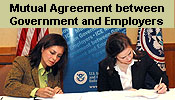
Search
Info Updates
National Threat Advisory
Elevated
![]()
Significant Risk of Terrorist Attacks
Report Suspicious Activity:
1-866-DHS-2-ICE1-866-347-2423
Information for families of ICE detainees:
Contact InformationPublic Information
The Cornerstone Report: Volume 2, Issue 2Suspicious Activity Reports: A Critical Tool For Financial Investigations
The three cases described above—all drawn from the case files of U.S. Immigration and Customs Enforcement (ICE)—illustrate just a few of the ways in which criminals can exploit U.S. financial systems to earn, move or store their illicit funding. But they also illustrate the importance of strong partnerships between federal investigators and the private sector. Each of these cases originated from information provided to investigators through “Suspicious Activity Reports” (SARs). The benefits derived from Bank Secrecy Act (BSA) reporting requirements go far beyond the information contained within the four corners of the documents themselves. While Currency Transaction Reports (CTRs), Currency and Monetary Instrument Reports (CMIRs), and other BSA-required reporting documents are extremely beneficial to law enforcement by creating a paper trail of potential criminal activity that allows the investigators to focus on specific transactions and their relationship with ongoing criminal activity, the mere fact that these reporting requirements exist may prove to be the most valuable anti-money laundering tool of all. The existence of the BSA reporting requirements, and the implementation of stringent and effective anti-money laundering programs built upon these requirements, have forced criminals to resort to more desperate schemes to earn, move and store their illicit funds. These schemes require them to act outside of legitimate channels, which makes their actions more susceptible to detection. As these illicit schemes are detected, “Red Flag” indicators of the scheme can be developed and used to detect other subjects attempting similar illegal acts which can be reported through the use of SARs. “Smurfing,” which is a by-product of the CTR process, is an excellent example of a scheme employed in an attempt to avoid the reporting requirements. Since this scheme was first introduced, it has become easily detected and provides clear evidence of ongoing criminal activity. Therefore, while many CTRs that CMIRs are filed on legitimate financial transactions and may provide limited information or assistance to law enforcement, the paper trail they create causes criminal organizations to resort to desperate—and therefore identifiable and vulnerable—means to move their illicit proceeds, as they attempt to avoid reporting requirements. Since 2001, more businesses and industries have been required to fill out these valuable reports to ensure that increasingly sophisticated money launderers, terrorists and other criminal organizations don't attempt to exploit vulnerabilities in our nation's financial systems. These businesses include casinos, money services businesses, and securities and futures industries. ICE's “Cornerstone” initiative for financial and trade investigations is committed to working with industry to ensure the integrity of the nation's banking and financial systems. And your feedback—through the scrupulous filing of SARs in response to legitimately suspicious activity or by sharing information with ICE investigators in other forums—is making a difference. For more information on “red flag” indicators that might signal the need for an SAR, visit us online at www.ice.gov/cornerstone. In addition, the Financial Crimes Enforcement Network, or FinCEN, publishes regular “SAR Activity Reviews” detailing trends and offering tips to industry. Check out the latest edition online at www.fincen.gov/sarreviewissue8.pdf. |
INSIDE THIS ISSUE | ||
Suspicious Activity Reports: A Critical Tool for Financial Investigations Spotlighting ICE’s SAR Review Teams SAR Referrals Provide Valuable Information to Law Enforcement in Their Fight Against Financial Crime SAR Review Sparks ICE Financial Investigation in Detroit ICE Campaign Targets Illegal Money Transmittal Businesses SCAM ALERT: Internet Fraudsters Prey On Families of Iraq Soldiers |
|||
| E-MAIL SIGN UP | |||
Cornerstone is U.S. Immigration and Customs Enforcement's (ICE)
comprehensive investigative initiative for fighting financial crime, trade
fraud and intellectual property crime. |
|||
| COMMENTS / CONTRIBUTIONS | |||
The Cornerstone Report covers a
broad range of topics related to
financial investigations and potential
vulnerabilities in the financial and
trade sectors. |
|||
| Report Suspicious Activity: 1-866-DHS-2-ICE |






 A fraudulent investment scheme in southern California that robbed hundreds of investors—mostly Filipino immigrants—of more than $25 million dollars.
A fraudulent investment scheme in southern California that robbed hundreds of investors—mostly Filipino immigrants—of more than $25 million dollars.
